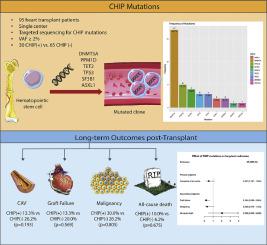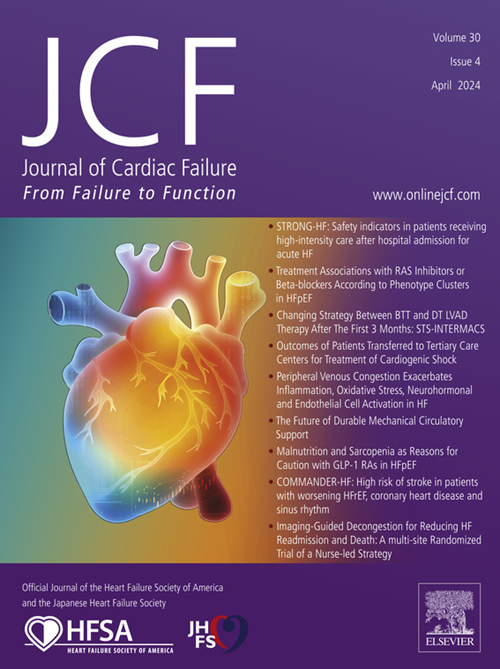潜力不确定的克隆性造血与心脏移植的长期结果
IF 6.7
2区 医学
Q1 CARDIAC & CARDIOVASCULAR SYSTEMS
引用次数: 0
摘要
本文章由计算机程序翻译,如有差异,请以英文原文为准。

Clonal Hematopoiesis of Indeterminate Potential and Long-term Outcomes in Heart Transplantation
Background
Clonal hematopoiesis of indeterminate potential (CHIP) mutations, a trait of aging, has been associated with the progression of cardiovascular disease and the development of malignancy. Uncertainty prevails regarding a robust association between CHIP and heart-transplantation (HT) outcomes.
Objectives
To determine the prevalence of CHIP mutations in HT and their association with long-term outcomes, including cardiac allograft vasculopathy (CAV), graft failure, malignancy, and all-cause mortality.
Methods
We conducted a mixed retrospective-prospective observational study of HT recipients with targeted sequencing for CHIP mutations (variant allele frequency [VAF] of ≥ 2%). The primary composite outcome was the first occurrence of CAV grade ≥ 2, graft failure, malignancy, cardiac retransplantation, or all-cause death. Secondary outcomes were the individual components of the composite primary outcome. Sensitivity analyses with base-case and extreme scenarios were performed.
Results
Among 95 HT recipients, 30 had CHIP mutations (31.6%). DNMT3A mutations were most common (44.7%), followed by PPM1D (13.2%), SF3B1 (10.5%), TET2 (7.9%), and TP53 (7.9%). The only significant independent predictor of CHIP was age at enrollment or age at transplantation. After multivariable adjustment, CHIP mutations were not associated with the primary outcome, which occurred in 44 (46.3%) patients (HR = 0.487; 95% CI:0.197–1.204; P = 0.119), nor were they associated with mlalignancy alone, or death.
Conclusion
We demonstrated no association between CHIP mutations and post-transplant outcomes, including CAV, graft failure, malignancy, and all-cause mortality. In line with previously published data, our analysis provides additional evidence about the lack of clinical value of using CHIP mutations as a biomarker for surveillance in outcomes after HT.
求助全文
通过发布文献求助,成功后即可免费获取论文全文。
去求助
来源期刊

Journal of Cardiac Failure
医学-心血管系统
CiteScore
7.80
自引率
8.30%
发文量
653
审稿时长
21 days
期刊介绍:
Journal of Cardiac Failure publishes original, peer-reviewed communications of scientific excellence and review articles on clinical research, basic human studies, animal studies, and bench research with potential clinical applications to heart failure - pathogenesis, etiology, epidemiology, pathophysiological mechanisms, assessment, prevention, and treatment.
 求助内容:
求助内容: 应助结果提醒方式:
应助结果提醒方式:


